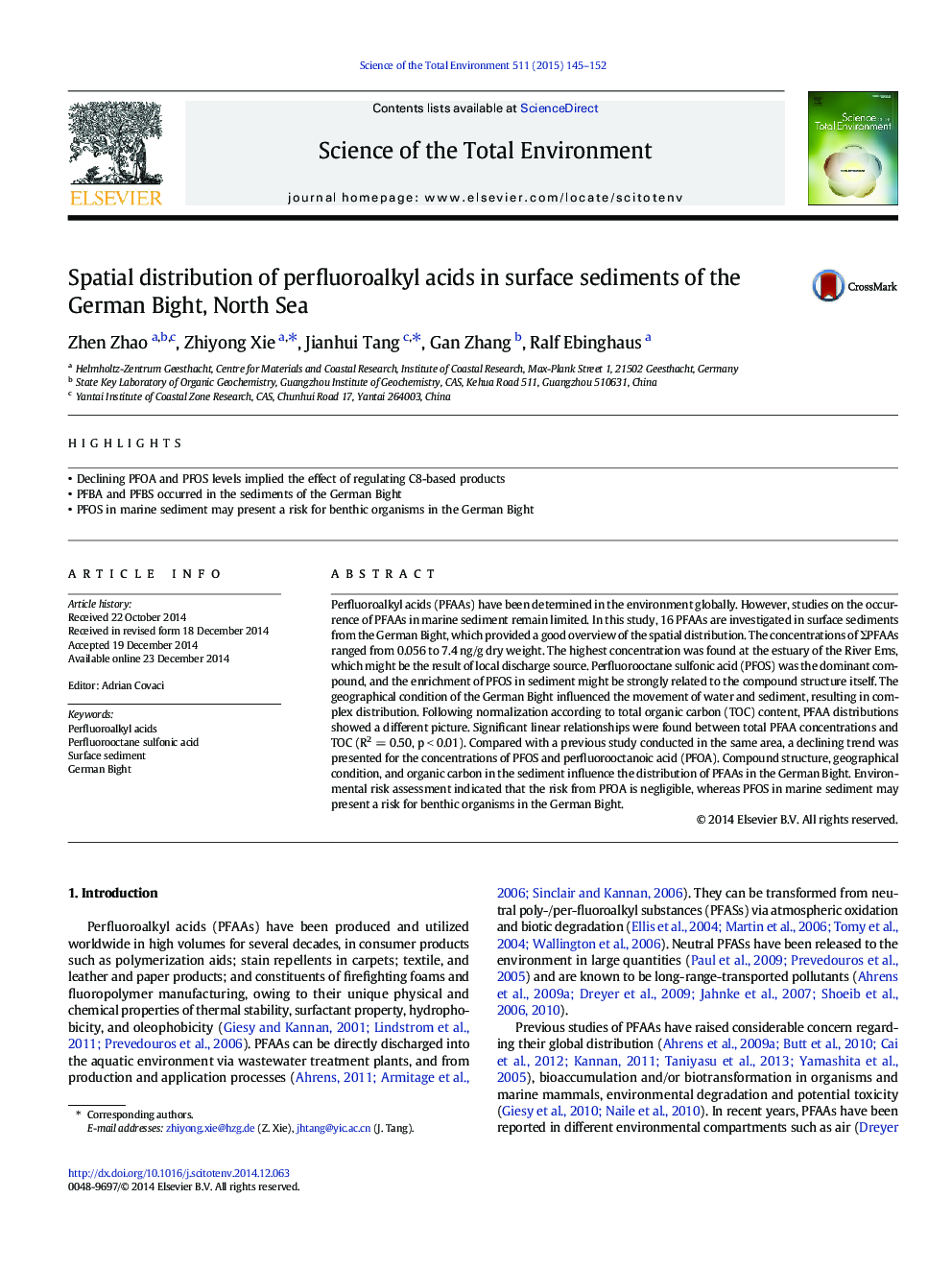| Article ID | Journal | Published Year | Pages | File Type |
|---|---|---|---|---|
| 6327424 | Science of The Total Environment | 2015 | 8 Pages |
â¢Declining PFOA and PFOS levels implied the effect of regulating C8-based productsâ¢PFBA and PFBS occurred in the sediments of the German Bightâ¢PFOS in marine sediment may present a risk for benthic organisms in the German Bight
Perfluoroalkyl acids (PFAAs) have been determined in the environment globally. However, studies on the occurrence of PFAAs in marine sediment remain limited. In this study, 16 PFAAs are investigated in surface sediments from the German Bight, which provided a good overview of the spatial distribution. The concentrations of ΣPFAAs ranged from 0.056 to 7.4 ng/g dry weight. The highest concentration was found at the estuary of the River Ems, which might be the result of local discharge source. Perfluorooctane sulfonic acid (PFOS) was the dominant compound, and the enrichment of PFOS in sediment might be strongly related to the compound structure itself. The geographical condition of the German Bight influenced the movement of water and sediment, resulting in complex distribution. Following normalization according to total organic carbon (TOC) content, PFAA distributions showed a different picture. Significant linear relationships were found between total PFAA concentrations and TOC (R2 = 0.50, p < 0.01). Compared with a previous study conducted in the same area, a declining trend was presented for the concentrations of PFOS and perfluorooctanoic acid (PFOA). Compound structure, geographical condition, and organic carbon in the sediment influence the distribution of PFAAs in the German Bight. Environmental risk assessment indicated that the risk from PFOA is negligible, whereas PFOS in marine sediment may present a risk for benthic organisms in the German Bight.
